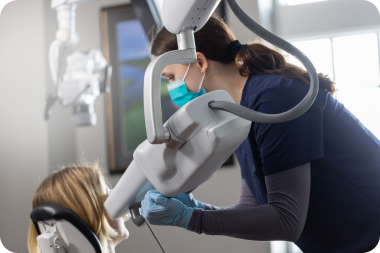Periodontists
Improving Periodontic Imaging: How Intraoral Tomosynthesis Benefits Periodontists
Periodontal disease affects millions worldwide, demanding advanced diagnostic tools and treatment approaches. One technology that has been recently introduced into dentistry is intraoral tomosynthesis. Its impact has been particularly noticeable in periodontics.
This cutting-edge imaging technique is transforming how periodontists diagnose and treat periodontal-related issues, enabling more accurate assessments and personalized treatment plans. In this article, we will explore the myriad ways in which periodontists can benefit from the integration of intraoral tomosynthesis into their practice.
1. Enhanced Visualization
In a large majority of periodontal practices in the U.S., periodontists rely on both 2D and 3D technologies to properly treatment plan a variety of case types. Traditional two-dimensional dental X-rays have limitations when it comes to capturing the full extent of pathological issues that are confronted daily. Intraoral tomosynthesis empowers periodontists to visualize teeth and bone in a format in which the clinician can scroll through teeth in .5- or .1-mm slices, as well as horizontally rotate teeth up to 12 degrees. This enhanced visualization provides a comprehensive view of the patient’s oral anatomy, allowing periodontists to identify interproximal caries, bone loss, or anatomical irregularities with precision.
2. Expedited Patient Treatment
Recognizing that every patient’s periodontal condition is unique, it is standard for a clinician to first use traditional 2D images to diagnose a case. It is common for the clinician to need more information to properly diagnose each patient’s unique condition. Often, the periodontist will need to utilize a CBCT with 3D capabilities to gain that information. As intraoral tomosynthesis integrates into more practices, clinicians are finding that sufficient information can often be collected with this technology to create the proper treatment plan and avoid breaking the workflow by taking a CBCT image. With detailed intraoral tomosynthesis images, they may be able to pinpoint the exact location and severity of the complication, depending on the case.
3. Minimized Radiation Exposure
Addressing concerns about radiation exposure is paramount in dental care. Thankfully, intraoral tomosynthesis offers the advantage of significantly lower radiation doses compared to traditional CBCT scans. Radiation doses with intraoral tomosynthesis are similar to traditional 2D levels. This makes it a safer option for periodontal evaluations, ensuring that patients can undergo necessary diagnostic imaging with minimal health risks.
5 Ease of Use
While 2D intraoral imaging has been a staple in dentistry for decades, the workflow remains unchanged with the Portray® System and intraoral tomosynthesis. The Portray software seamlessly integrates with leading patient management systems and is exceptionally user-friendly for both the doctor and staff. It can capture images in both standard 2D and tomosynthesis format, ensuring a smooth transition to this advanced technology.
4. Improved Patient & Payor Case Acceptance
Images obtained via intraoral tomosynthesis enhance patient and payor case acceptance. Periodontists can display patients’ oral anatomy on-screen, guiding them through the anatomy slice by slice or by rotating the dentition. This visual and understandable approach aids in patient comprehension and acceptance of recommended treatments. The same applies to insurance payor case acceptance, as clinicians can provide insurance payors with specific slices that highlight and justify the need for treatment. Periodontists can also provide referring general dentists with very specific images, as well as show other pathologies that can be discovered with intraoral tomosynthesis, like interproximal caries, resorptions and more.

Conclusion:
The integration of intraoral tomosynthesis into periodontal practice marks a significant leap forward in the diagnosis and treatment of periodontal complications. Its benefits encompass enhanced visualization, more data for disease assessment, expedited patient treatment, reduced radiation exposure, improved patient communication, shortened treatment times, and support for research and education. Periodontists who embrace this technology are better equipped to provide their patients with the highest standard of care, ultimately leading to healthier smiles and improved overall well-being. As intraoral tomosynthesis continues to evolve, its impact on periodontics is poised to grow, further solidifying its role as an indispensable tool in the periodontist’s toolkit.